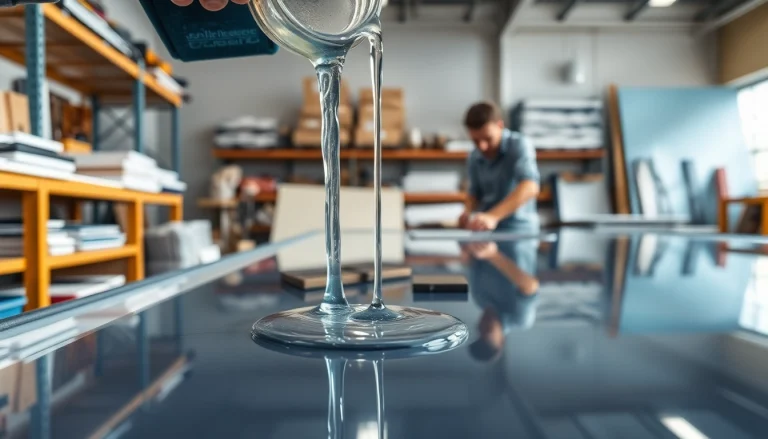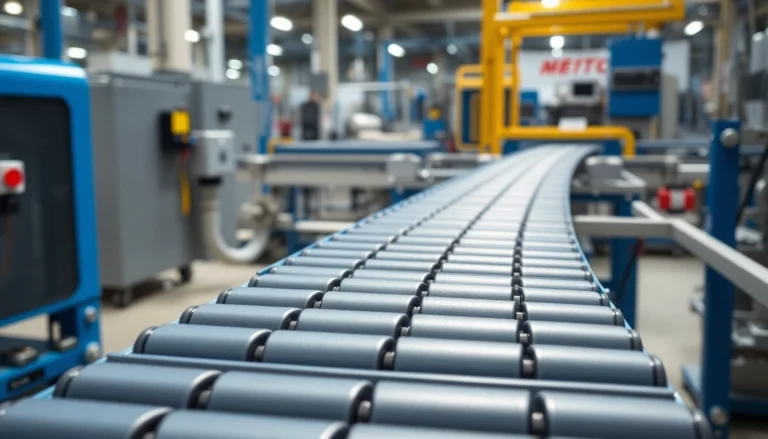
Understanding Laminating Resin: What It Is and How It Works
Definition of Laminating Resin
Laminating resin is a type of synthetic resin primarily used to bond materials together, creating a strong and durable product that can withstand significant stress and environmental factors. It is often utilized in industries such as boating, automotive, construction, and crafts, where materials like fiberglass, wood, or composites are layered to enhance strength, structural integrity, and aesthetics. Laminating resin serves as the adhesive that holds together these diverse layers, essential for products that require reliability and toughness.
Types of Laminating Resin: Polyester vs. Epoxy
Laminating resins predominantly fall into two categories: polyester resin and epoxy resin, each bearing unique characteristics that make them suitable for various applications.
Polyester Resin: Known for its affordability, polyester resin is favored for its ease of use and quick curing time. It is particularly popular in marine applications for building boats and other watercraft. It typically has a lower mechanical strength compared to epoxy but provides adequate durability for many projects.
Epoxy Resin: In contrast, epoxy resin is recognized for its superior strength, adhesion, and resistance to environmental degradation. Epoxy comprises two components—a resin and a hardener—that when mixed, create a chemical reaction resulting in a robust and resilient bonding agent. Epoxy tends to be more versatile, making it suitable for applications requiring more precision and durability.
How Laminating Resin Bonds Materials
The bonding process of laminating resin involves a few essential steps. First, the surfaces to be bonded must be adequately prepared, typically requiring cleaning and sometimes sanding to enhance adhesion. The resin is then applied to the surface or layered with the material intended to be bonded, such as fiberglass matting or cloth. When the resin cures, it undergoes a chemical reaction that alters its structure, providing a strong bond that unifies the materials into a single entity.
The degree of adhesion and overall strength achieved during the bonding process can be influenced by factors such as the type of resin used, the curing temperature, and the materials combined.
Choosing the Right Laminating Resin for Your Needs
Factors to Consider When Selecting Laminating Resin
Choosing the right laminating resin is crucial to achieving successful results in any project. Consider the following factors:
- Application Type: Identify the specific use case for the laminating resin. Are you building a boat, crafting a model, or repairing equipment? Different applications may require different resin properties.
- Material Compatibility: Ensure that the laminating resin you choose is compatible with the materials you plan to bond. For instance, polyester resin might be ideal for fiberglass while epoxy may be better suited for wood.
- Curing Time: Different laminating resins cure at varying rates. If you need a quick turnaround, consider a rapid-curing resin, but be mindful of working time before the material starts to set.
- Strength Requirements: Consider the structural demands of your project. Epoxy is generally stronger and more durable compared to polyester, making it the preferred choice for load-bearing applications.
- Environmental Factors: If the end product will be exposed to moisture, heat, or other environmental toxins, choose a resin formulated to withstand such conditions.
Common Applications for Laminating Resin
Laminating resins find widespread use across various sectors due to their adhesive properties and effectiveness in materials bonding. Common applications include:
- Marine Industry: Building and repairing boats and yachts, where enhanced water resistance and rigidity are required.
- Aerospace: Bonding lightweight materials to create durable yet lightweight components.
- Construction: Utilized in composite panels, flooring, roofing, and other building materials for added durability.
- Automotive: Used in body panels and repairs in automobiles, contributing to both aesthetics and structural integrity.
- Sports Equipment: Manufacturing high-performance gear—like surfboards and bicycles—where weight, strength, and longevity are critical.
Environmental Considerations with Laminating Resin
Sustainability and environmental awareness have become significant factors in the selection of laminating resin. Many manufacturers are now developing eco-friendly formulas that minimize harmful emissions and environmental impact. When selecting laminating resin, consider the following environmental factors:
- VOC Levels: Choose resins with low volatile organic compounds (VOCs) to reduce air pollution and health risks during application.
- Recyclability: Some modern resins are designed to be recyclable after their lifecycle, helping reduce waste.
- Biobased Options: Look for laminating resins derived from renewable resources that lessen dependence on petroleum-based products.
Step-by-Step Guide to Using Laminating Resin
Preparing Materials for Laminating Resin Application
Proper preparation is essential for the effective application of laminating resin. Follow these steps:
- Gather Materials: Ensure all materials, tools, and safety equipment are ready.
- Clean the Surfaces: Remove any contaminants such as dust, grease, or moisture from the surfaces to promote optimal adhesion.
- Sanding: Lightly sand the surfaces that will come into contact with the resin to improve bonding.
- Masking: Use masking tape to protect areas where you do not want resin applied.
The Application Process: Best Practices
To optimize the application of laminating resin, consider these best practices:
- Mixing: Follow manufacturer instructions for mixing resin and hardener, ensuring accurate ratios are achieved to promote a proper cure.
- Layering: If incorporating multiple layers of material, apply each layer before the resin has fully cured to enhance adhesion between layers.
- Application Method: Use a brush, roller, or spray gun for uniform application, ensuring even coverage across all surfaces.
- Work in a Controlled Environment: Ideal temperature and humidity levels can affect the resin curing process. Work in a well-ventilated area with controlled environmental conditions.
Post-Application Care and Curing of Laminating Resin
After application, the following steps will ensure optimal curing:
- Allow Adequate Curing Time: Allow the resin to cure as per manufacturer recommendations, which can vary significantly.
- Monitor Conditions: Keep an eye on temperature and humidity levels during curing, as drastic changes can affect the final outcome.
- Inspect the Bond: Once cured, inspect the bond for consistency and strength. Conduct tests to ensure structural integrity if applicable.
- Finishing Touches: After complete curing, sanding or polishing can be done for aesthetic enhancement if necessary.
Mistakes to Avoid When Working with Laminating Resin
Overuse of Laminating Resin and Its Effects
Using too much laminating resin can lead to several complications including excessive weight, long curing times, and inadequate performance. It’s essential to measure and mix resin accurately to avoid compromises in the structural integrity of the project.
Ignoring Safety Precautions During Application
Safety should always be a priority when working with laminating resin. Neglecting protective gear—such as gloves, goggles, and respirators—can expose you to harmful chemicals. Always work in a well-ventilated area and adhere to safety guidelines provided by the resin manufacturer.
Neglecting Proper Curing Techniques
Curing is crucial in achieving a solid bond. Neglecting the specifics of curing can result in a compromised bond or incomplete setting of the resin. Follow instructions closely regarding temperature, humidity, and time to ensure the effectiveness of the laminating resin.
Future Trends in Laminating Resin Technology
Innovations in Laminating Resin Formulations
The laminating resin field has witnessed significant advancements, with ongoing innovations tailored to enhance performance. Future trends include the development of high-performance resins with improved properties such as faster curing times, increased strength, and better thermal or chemical resistance.
Eco-Friendly Alternatives in Laminating Resin
Environmental concerns have driven manufacturers to explore alternatives to traditional laminating resins. Biobased resins derived from plant materials present an eco-friendly option while offering similar or improved performance characteristics. Continual research is expected to broaden the availability of sustainable options in laminating resin technology.
The Impact of Technology on Laminating Resin Applications
Technological advancements, particularly in robotics and composite manufacturing techniques, are reshaping the landscape of laminating resin applications. Automated processes enhance precision and efficiency, leading to reduced waste and improved quality control. The integration of smart materials is also paving the way for innovative applications in various fields, from aerospace to consumer goods.






